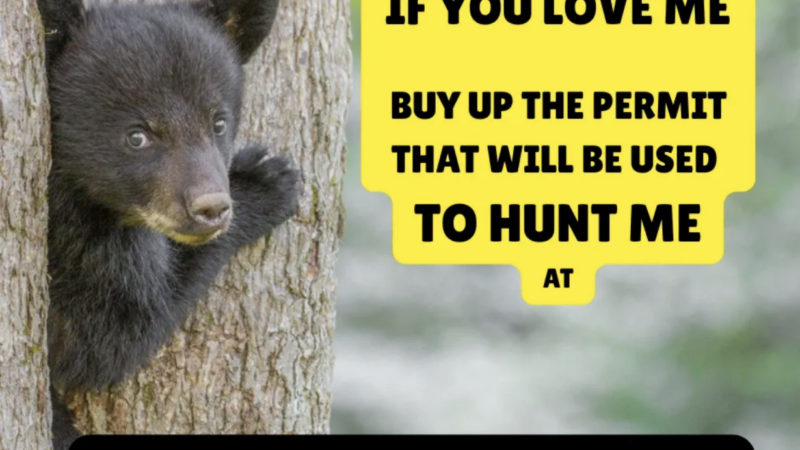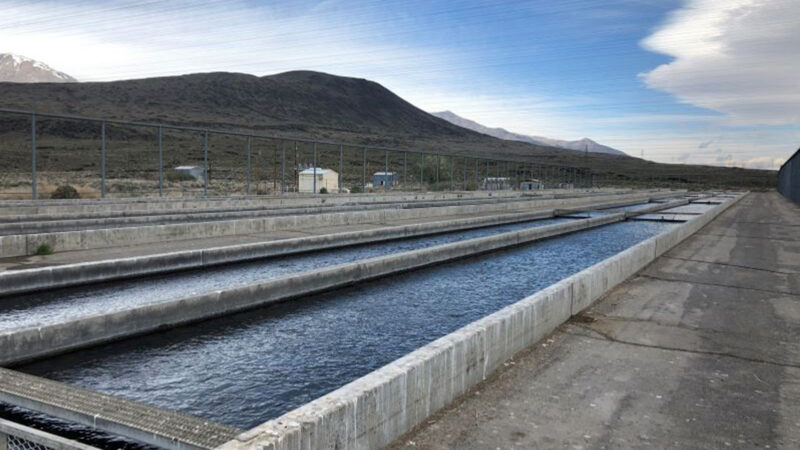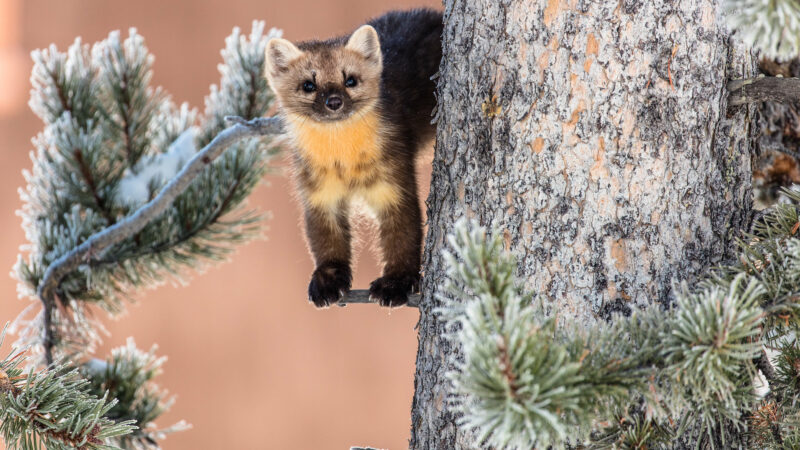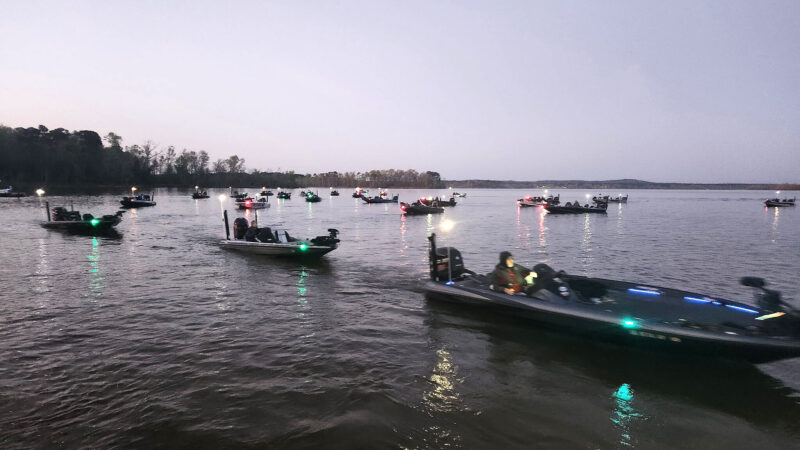I Hunted with a Professional Kangaroo Shooter in Australia
Sitting on a roadside boulder in the Australian Outback, I scraped the last beans from the bottom of a can. Then it was back to work.
With the aid of a fading headlamp, I continued fleshing a massive camel cape draped across my lap. Once I got to the lips, I realized the task was far greater than caping a moose. Then it started to rain.
I slid the cape under the Ute and crawled into my swag. The sleeping bag inside a bivy fashioned from well-worn, oiled leather, kept me dry. An hour later, as suddenly as it began, the downpour ceased. Poking my head out, stars sparkled through the waning clouds. Hundreds of miles from the pollution of city lights, the Southern Cross and Aurora Australis grasped me. Only in Alaska’s high Arctic had I seen a night sky as beautiful.
Then the silence was broken. “Here they come,” grumbled my buddy, Les Kosek, still tucked deep inside his bivy. “The road-trains are on the move. Hope ya brought yer ear plugs mate ‘cuz it’s gonna be like this all night!”
The distant truck engine roared, then there was a thud. Then another thud, followed by another. The semi wasn’t slowing down.
“Sounds like he has a flat tire or something.”
“Naw, them’s skippies he’s hittin’ mate. That’s why they got big bull bars on their rigs. They can’t afford to slow down for every skippy that hops into the road. They hit ‘em full speed and just keep driving.”
Nighttime temperatures were considerably cooler than in the day, that’s why big trucks were hauling livestock in their double trailers all night long on this remote highway, the only one serving this region in Queensland. All night long rig after rig cruised by hitting kangaroos (or skippies as the locals call them) all the while and never slowing down.
In the morning I expected to see dead kangaroos everywhere. I stood on the center line of the straight, potholed road, scanning from horizon line to horizon line. There were none. Only blood spots. “The fox eat ‘em, and what they miss the birds and other critters get,” Kosek said, trying to balance the coffee pot over an open fire, a cigarette stuck to his lower lip with ashes longer than the butt.
On several nights during my 25-day DIY safari through the western half of Australia, I was forced to pull over and sleep on the roadside because kangaroos were so thick it was impossible to make headway. Kangaroos are not only a hindrance to nighttime drivers, they’re a devastating menace on many crops.
Riding with a Professional Roo Shooter

“Skippies don’t just pluck the grass, they eat it right down to the root and it won’t grow back that season,” said Barry Brown when we first met. It was June 1999, and I would spend the next few days with Brown, one of the best known professional ‘roo shooters in the state. “In 1996 there were about 1,800 of us, now there are only 1,000 or so because the meat and fur market is low for kangaroos,” Brown told me.
It took more than six months of concerted petitioning but the Queensland’s Department of Nature Conservation finally awarded me with multiple kangaroo tags. They said I was the first foreigner to be granted such a permit. Back then, a foreign hunting license cost $95. I could get 500 kangaroo tags at .57 cents each. (I didn’t actually buy that many but that potential allotment revealed just how serious the state was about managing the problem marsupials). A $16 surcharged followed. I was issued detailed literature on the topic of hunting kangaroos, including a must-follow code of ethics. With the permit, gray and red kangaroos, wallaroo, and whiptails were fair game.
“Total, pro shooters are taking over 2 million ‘roos a year, here, with most being grays” said Brown. His rig was set up to handle 42 ‘roos at a time. All are shot in the head at night, using a spotlight. The tails are cut off and the animals gutted, then hung on a specialized rack on his truck. When every peg is full, Brown speeds to the chiller and hangs them inside. The next morning another company gathers the carcasses in semi trailers and begins shipping them to market. The meat was a delicacy in many European countries at the time, maybe it still is. Kangaroo leather is thin and strong; golf gloves were the primary export market at the time.
I ate kangaroo many times on this trip. My favorite way was to toss the whole tail, fur, skin and all, onto the coals of a campfire. The hair burned off and the meat cooked inside the skin casing. It was delicious.
The most skippies Brown shot in a single night was 168, and all came from one crop field. Thousands of them could be seen on any given night. He’d shoot about 5,000 a year with his .222 Sako magnum, using 50 grain hollow-point handloads. The average shot distance was 175 yards, with only a few coming inside 100 yards.
“You have to hit them at the far edge of the light, otherwise they spook,” whispered Brown the first time we pulled up to a field. When he turned on the light, I felt like I was on the East Coast of the U.S., looking at fireflies hovering near the forest’s edge. Eyeballs were everywhere. We shot a lot. The local farmers were thrilled. The biggest red ‘roo I got weighed 132 pounds — a ball of pure muscle, and an impressive animal all-around.
Nighttime Foxes
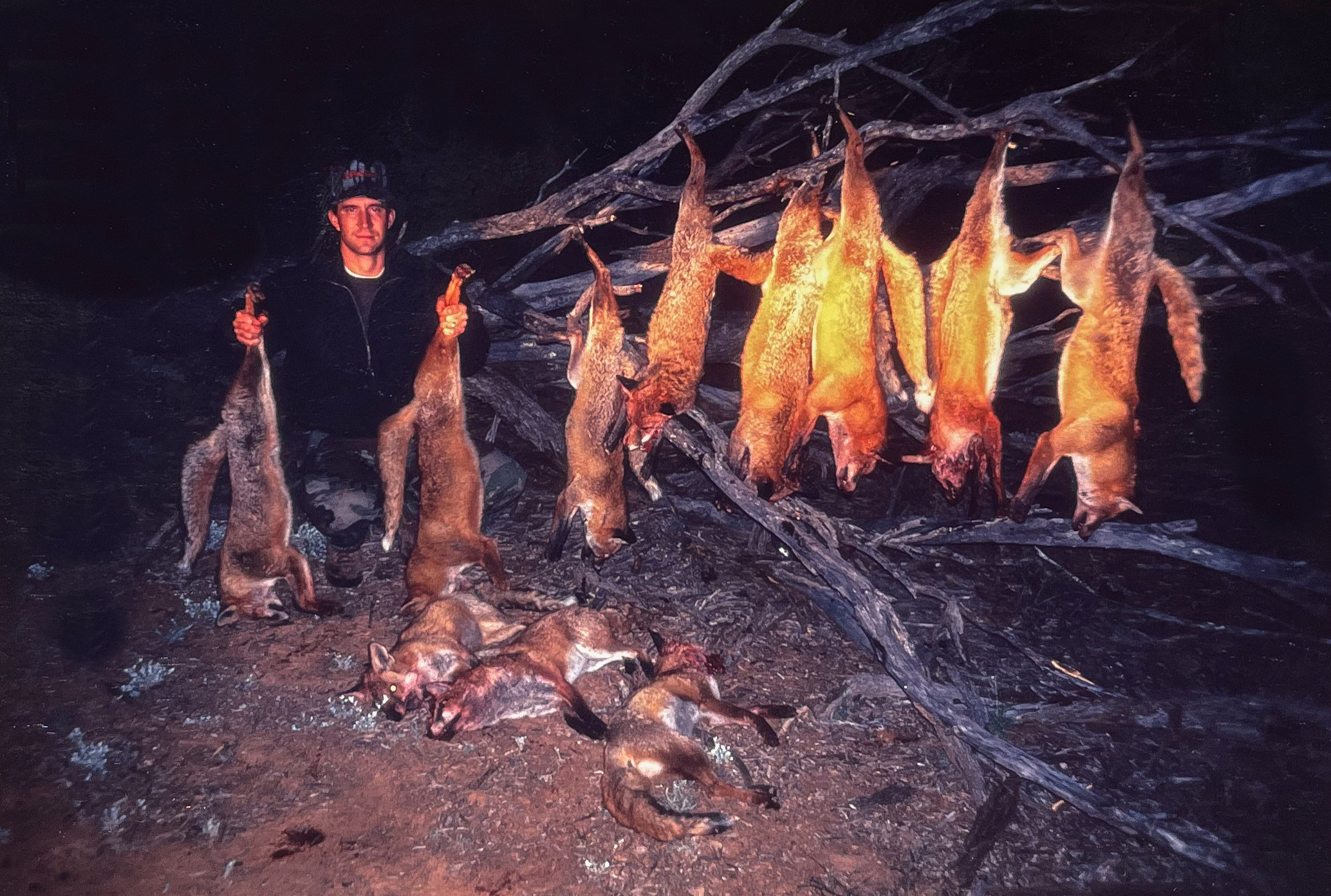
Photo by Scott Haugen
One night Brown dropped me off to hunt for red fox while he took a load of skippies to the chiller. It was pitch dark. I had no idea where I was. There were no cell phones back then so I abided by Brown’s words to not leave the spot. The plan was for him to pick me up for another round of ‘roos before daybreak.
Less than optimistic — I’m used to relocating after shooting a fox or coyote back home — I started calling. Sitting in one spot for three hours, 77 red fox came to the call. I shot 11. Could have shot them all but didn’t. I’m not sure why. It just felt like enough.
The call I used was a small whistle made of metal that I picked up at a country feed store with Brown. It cost $1 and I bought two more for backup. The fox loved it. Many approached so near I could almost touch them. They came in as singles but often four or five mingled in the background. It was the most memorable night of predator hunting I’ve experienced, before or since.
An Outback Varmint Safari
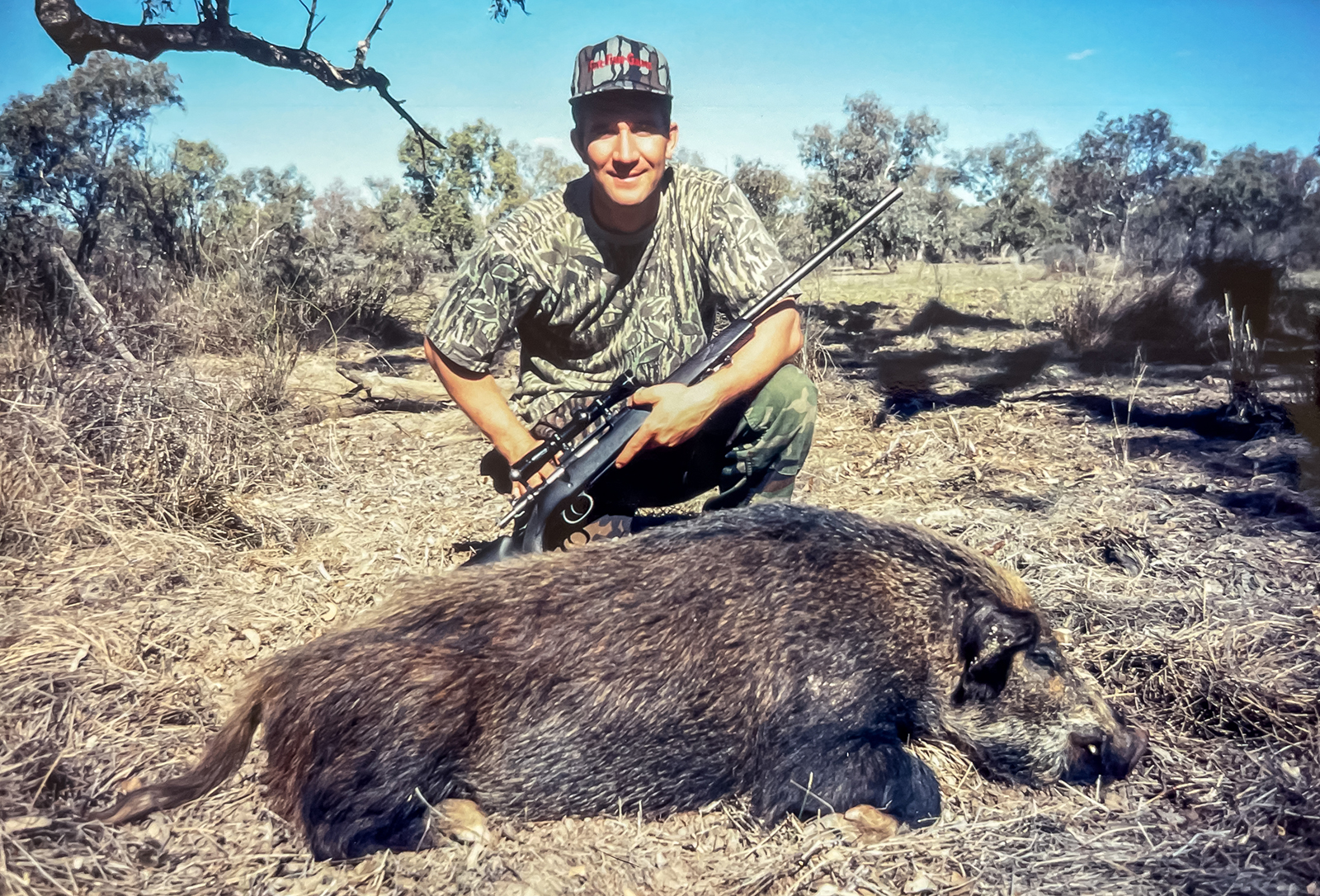
After a few days with Brown I met up with Kosek. We headed the Ute down the wide open Birdsville Track, a remote highway leading to Southeast Queensland. It was here, seemingly in the middle of nowhere we drove up to the ranch of Bryan Schmidt. Schmidt was in his 60s, a third generation cattle farmer who’d only been off the family property one time in his life.
“My mom took me to the city to see a dentist when I was a kid and I hated it and never went back,” said Schmidt in his heavy Australian accent without so much as a grin.
Schmidt drove us around some of his property. It was expansive, hundreds of thousands of acres. We laid eyes on only a fraction of it.
“Hit these bore drains and that creek bottom, that’s where the pigs, goats, and skippies will be,” said Schmidt. “Between the bore drains, the creek, cattle fences and the dingo fence to the east, you can’t get lost here.”
The dingo barrier fence is one of the longest man-made structures in the world. Stretching over 3,400 miles it was designed to keep the wild dogs on the east side of the fence, protecting livestock to the west. It’s worked surprisingly well. “If you see a dingo, shoot it, but I’ve not seen one here in years,” Schmidt said.
“A few clicks to the west there’s a big pond, go sit on the edge of that and you can shoot all the hogs you want, plenty of skippies and goats, too,” Schmidt rambled. “Shoot all ya want, my chiller’s about empty.”
“That it?” I asked as we rolled into his dilapidated ranch house that, from a distance, bore a strong resemblance to the Bates Motel. “Anything else I need to know?” “Nope, shoot away, there are way too many pigs and ‘roos around and they’re ruining fences and eating my cow’s grass,” grumbled Schmidt, gazing under the heavy shadow of his Outback hat.
I had connected with Schmidt through Barry Brown who often shot problem ‘roos on his properties. “Oh, yeah, watch out for snakes,” Schmidt said. “If a brown gets ya just lay down and enjoy your last few seconds … I’ll find ya, the birds will lead me there.”
On the first afternoon I quickly learned water was the key to finding game. Wild pigs and feral goats were abundant, constantly coming and going to the bore drains. Bore drains are hand-made ditches that are filled by holes ranchers punch into the ground. Water wells-up and gravity feeds the bore drains, sometimes for several miles.
Schmidt loved eating wild boar and kangaroo meat, saving his beef for market. Right before dark I shot a plump, 80-pound sow, a great eating size. Poking my head into the house I asked Schmidt where he wanted the meat. I lopped off a hind quarter from the sow and laid it on the kitchen counter, as instructed. There wasn’t much room. Schmidt quickly skinned it, drove a hefty railroad spike into the center, tossed it into a big pan and shoved it in a wood burning oven. “The spike heats up, cooks it from the inside,” Schmidt said, never looking up.
Schmidt, Les, and I sat on the porch and shared stories, then went to skinning critters and hanging them in the chiller. “It’s done!” declared Schmidt, cutting off Les mid-sentence in his story. Schmidt went to the kitchen and we followed.
As soon as the oven door opened two cats popped out from behind the refrigerator. Another leapt from a cabinet with no door. Others emerged from the tops of cabinets and behind doors. They poured in from other rooms. Schmidt started slicing off chunks of meat and tossing them onto the floor. The cats devoured it. I counted 23 in all though it seemed there were twice that. The inside of the house was worse than the Bates Motel. Way worse.
Schmidt cut off a big hunk of meat and held it in my direction. I plucked it from the carving fork. He did the same for Les. Then Schmidt grabbed one and walked back to the porch.
While Schmidt likes game meat, he was in need of it for his dogs and cats. They didn’t eat commercial dog and cat food. Ever. I was obliged to help. “Take these totes and head to the creek,” ordered Schmidt. I loaded a half dozen totes into the Ute hoping to fill them with game meat.
The creek canopy seemed sparse from afar. Inside, it came to life. Kookaburra’s screamed from the low hanging branches of eucalyptus trees. Wild parakeets were everywhere. I’ve been infatuated with birds since boyhood and was laying eyes on species I’d only seen in zoos and on TV.
Stumbling over exposed tree roots hidden by dry leaves, I couldn’t take my eyes off the life above. Then a dark object appeared in the crotch of a tree. I walked around the other side to get the light behind me. That’s when the figure transformed to gray. Two fluffy ears and a big black nose took shape. Through binoculars I was staring at my first wild koala. I found four more. They moved so slow, so deliberate and unafraid.
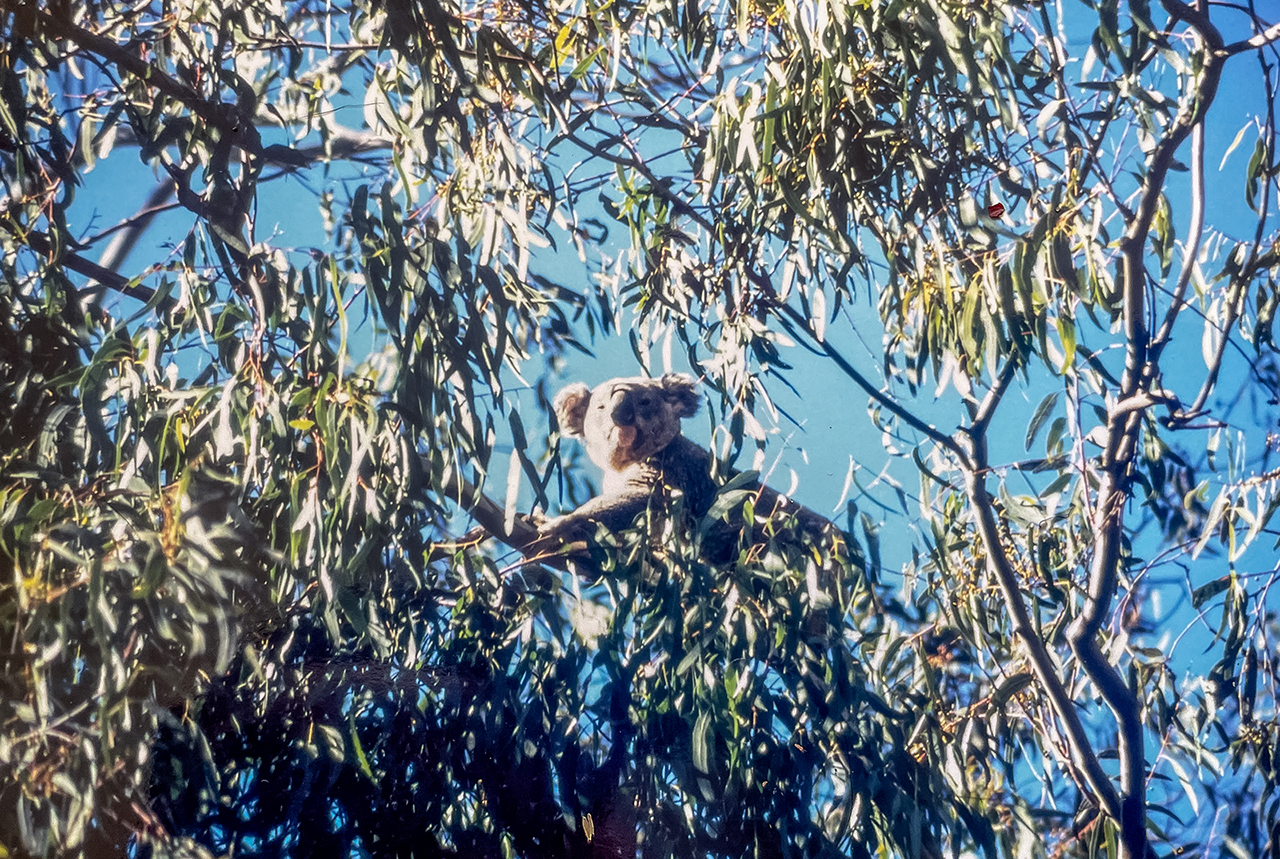
I shot a few pigs that afternoon but not as many as I should have. I’d been sidetracked by the native wildlife.
I returned to the creek the following morning and brought a couple loads of meat back for Schmidt. He figured it was enough to last a few months.
Schmidt appreciated the help and I appreciated the opportunity to hunt on his land — to see places and animals I’d never seen. I had hunting to thank for taking me to this desolate corner of the world where I learned it’s not always about killing — even when you’re culling varmints.
The post I Hunted with a Professional Kangaroo Shooter in Australia appeared first on Outdoor Life.
Source: https://www.outdoorlife.com/hunting/kangaroo-culling-australia/


